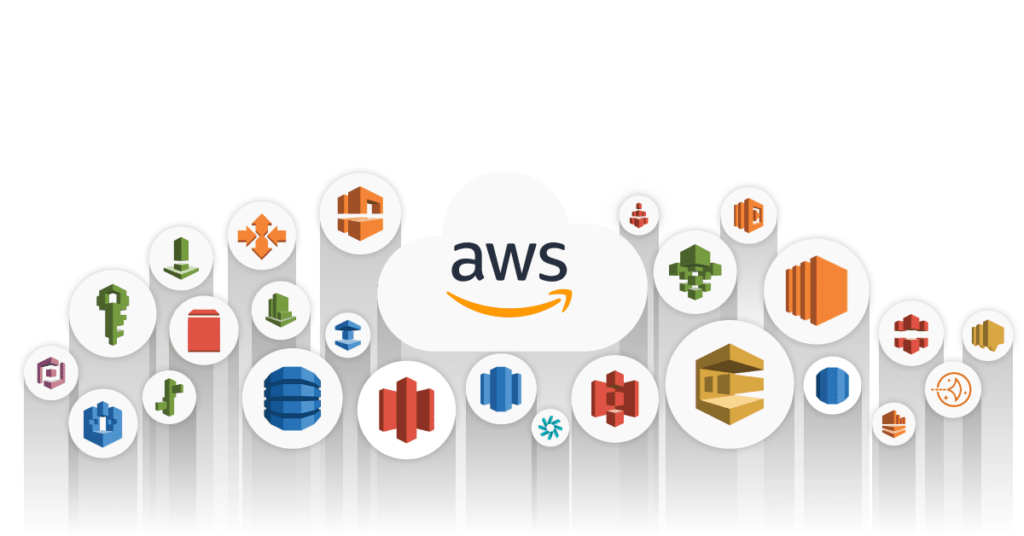AWS (Amazon Web Services) is a cloud computing platform that provides a wide range of services and tools for businesses and individuals to deploy and manage their applications and data. Here is a list of AWS services along with their uses and benefits:

- Amazon Elastic Compute Cloud (EC2): This service provides scalable computing capacity in the cloud, making it easier to develop, deploy, and run applications. Benefits include flexibility, scalability, and cost-effectiveness.
- Amazon Simple Storage Service (S3): This service provides scalable storage in the cloud, making it easier to store, retrieve, and backup data. Benefits include durability, availability, and security.
- Amazon Relational Database Service (RDS): This service provides managed database services in the cloud, making it easier to create, run, and scale databases. Benefits include high availability, security, and ease of management.
- Amazon DynamoDB: This is a managed NoSQL database service that provides fast and predictable performance with seamless scalability. Benefits include scalability, high performance, and low latency.
- Amazon Elastic Load Balancer (ELB): This service distributes incoming application traffic across multiple targets, such as EC2 instances, containers, and IP addresses. Benefits include high availability, scalability, and cost-effectiveness.
- Amazon Elastic Container Service (ECS): This is a highly scalable, high-performance container orchestration service that makes it easy to run, stop, and manage Docker containers on a cluster. Benefits include ease of use, scalability, and cost-effectiveness.
- Amazon Elastic Kubernetes Service (EKS): This is a managed Kubernetes service that makes it easy to deploy, manage, and scale containerized applications in the cloud. Benefits include ease of use, scalability, and cost-effectiveness.
- Amazon Simple Notification Service (SNS): This service provides message delivery between distributed systems, making it easier to build and scale distributed applications. Benefits include scalability, reliability, and cost-effectiveness.
- Amazon Simple Queue Service (SQS): This is a fully managed message queuing service that enables decoupling and scaling of microservices, distributed systems, and serverless applications. Benefits include reliability, scalability, and ease of use.
- Amazon Simple Workflow Service (SWF): This service provides a way to coordinate distributed applications and automate workflows across multiple services and systems. Benefits include simplicity, scalability, and cost-effectiveness.
- Amazon CloudFront: This service provides a content delivery network that delivers data, videos, and applications securely to customers globally. Benefits include low latency, high transfer speeds, and cost-effectiveness.
- Amazon Route 53: This is a scalable domain name system (DNS) service that enables businesses to route end users to internet applications. Benefits include high availability, scalability, and cost-effectiveness.
- Amazon Glacier: This is a secure, durable, and low-cost storage service that provides long-term backup and archival solutions. Benefits include durability, security, and cost-effectiveness.
- Amazon CloudWatch: This service provides monitoring for AWS resources and applications, making it easier to track metrics, collect log files, and set alarms. Benefits include visibility, scalability, and cost-effectiveness.
- Amazon Kinesis: This service enables real-time processing of streaming data, making it easier to capture, process, and analyze large volumes of data in real-time. Benefits include scalability, low latency, and cost-effectiveness.
- AWS Lambda: This service provides a serverless computing environment for running code in response to events, making it easier to build and deploy serverless applications. Benefits include scalability, cost-effectiveness, and ease of use.
- Amazon Polly: This is a text-to-speech service that enables businesses to convert written text into spoken words, making it easier to create natural-sounding speech for applications. Benefits include ease of use, flexibility, and cost-effectiveness.
- Amazon RDS (Relational Database Service): This service provides scalable and managed database services for MySQL, PostgreSQL, Oracle, and Microsoft SQL Server. It allows businesses to deploy and manage databases in a highly secure, reliable, and cost-effective environment.
- Amazon VPC (Virtual Private Cloud): This service provides a secure and isolated cloud environment where businesses can launch their resources. It allows businesses to customize their virtual network and control access to their resources.
- WS Lambda: This service provides serverless compute services. It allows businesses to run their code without provisioning or managing servers, thus reducing operational costs and increasing productivity.
- AWS Elastic Beanstalk: This service provides an easy-to-use platform for deploying, managing, and scaling web applications. It allows businesses to focus on their applications instead of infrastructure management.
- Amazon SES (Simple Email Service): This service provides a highly scalable and cost-effective email service for businesses to send and receive emails. It allows businesses to send transactional and marketing emails to their customers.
- AWS CloudFormation: This service provides an easy way to create and manage a collection of related AWS resources. It allows businesses to deploy and manage their infrastructure in a repeatable and automated way.
- AWS Identity and Access Management (IAM): This service provides a centralized way to manage access to AWS resources. It allows businesses to create and manage users, groups, and permissions to access their resources.
- Amazon Redshift: This service provides a managed data warehouse for businesses to store and analyze their data. It allows businesses to analyze large amounts of data in a cost-effective and scalable way.
- AWS Glue: This service provides a managed extract, transform, and load (ETL) service for businesses to prepare and transform their data for analytics. It allows businesses to easily move data between various data sources and data warehouses.
- Amazon Rekognition: This is a deep learning-based image and video analysis service. etc






